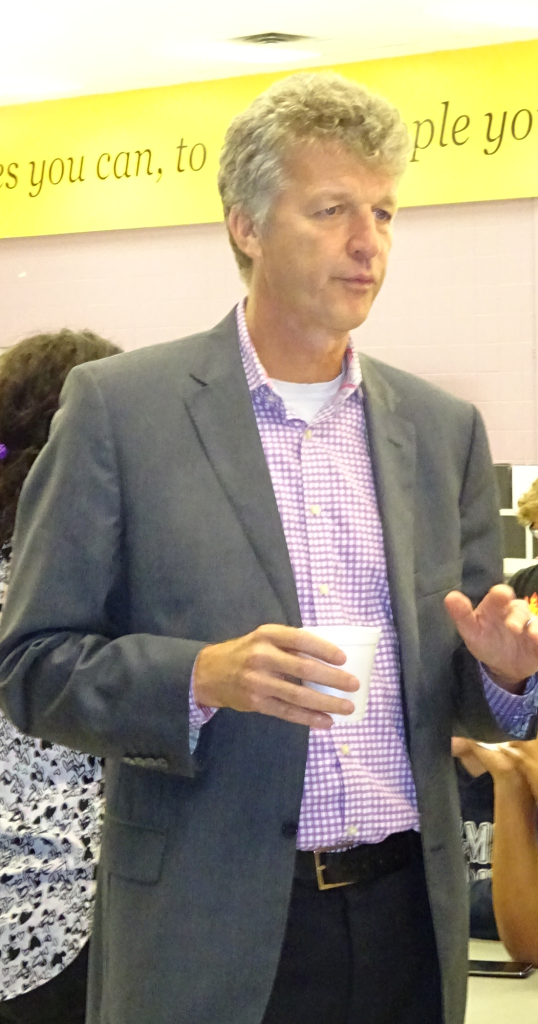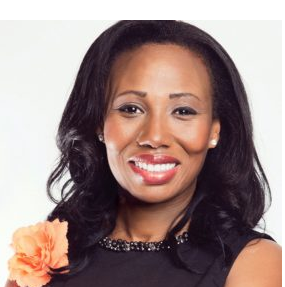 By Pepper Parr
By Pepper Parr
October 26th, 2020
BURLINGTON, ON
The issue came to the surface when Medina Jones posted her complaint about the way she had been treated by the Guidance office at her high school, Oakville Trafalgar in Oakville, on her Instagram account
The item went viral.
 The Grade 12 student at Oakville Trafalgar High School in the Halton District School Board, has been working her entire high school career with the aim of attending a prestigious British university where she could excel in her selected field of study.
The Grade 12 student at Oakville Trafalgar High School in the Halton District School Board, has been working her entire high school career with the aim of attending a prestigious British university where she could excel in her selected field of study.
To apply to the U.K., Jones required a letter from her school providing a set of predicted grades based on both her previous achievements and what she and her teachers expected she would achieve in her courses this year.
The British system leaves room for discretion, according to the U.K.-based Universities and Colleges Admission Service (UCAS), though it outlines policies to guide educators on how to ensure grades are neither inflated nor suppressed.
“Students should be given the opportunity to discuss their predicted grades with you,” reads UCAS’s recommendations.
“It may be that they can demonstrate progress, and you’re comfortable in changing their prediction. Equally, you may not be aware of extenuating circumstances that have affected their performance to date.”
Yet Jones claimed that the school’s guidance department didn’t consult with her past teachers, nor did it speak to her about her goals. Instead, she was dismayed to find she was provided with several predicted grades that were below what her record indicated she would likely achieve.
From Jones’ perspective, this was just one more example of a pattern of anti-Black racism in which Black and racialized students at the school were discouraged from pursuing ambitious goals.

She took to Instagram to share her story earlier this month. The video went viral, racking up over 15,000 views, liked and commented on by past and present students, some who shared their own experiences of racism.
In the meantime, her mother Rowda Mohamud wrote to the school and to the board’s Superintendent of Equity and Inclusive Education.
The Superintendent followed up with the school principal. After a frustrating back and forth, Jones eventually received revised predicted grades she felt more fairly reflected her capabilities, though without any further transparency.
The Board superintendent responsible for the school ,Tina Salmini told the family an investigation was underway, saying only that the allegations “are serious and will be responded to accordingly and in conjunction with our policies and procedures.”

Stuart Miller, Director of Education for the Halton District School Board.
The Director of Education for the Halton District School Board, which administrates the public schools in Oakville met with Mohamud and Jones, and later tweeted that “although the specific incident that came to light this week has been resolved, the much larger issues both she and the comments illustrated have not yet been fully addressed.
“It is clear from the comments and sentiments expressed by her and the other Black and racialized students of the HDSB that there is much work for us to do to end anti-Black and anti-Indigenous racism.”
(Jones and Mohamud said they won’t consider their issue “resolved” without an apology and accountability.)
That same day, Jones’ principal sent out a statement to the school community acknowledging concerns around “systemic discrimination” and inviting students to submit experiences through an online form.
Alexsis Morrison, who is Black and currently a second-year college student, said she took the school up on its offer. Back in Grade 10, she was told her 80 per cent average wasn’t good enough for her to transfer to the school by the same guidance counsellor accused of discriminating against Jones. She said her brother, currently in Grade 11, was also treated unfairly and discouraged from pursuing academic-level courses.
In an interview with CBC this morning Miller said the “short term issue circumstances” have been resolved. “We know what happened and how it happened.”
“We now have to be responsive and accountable to this community and that is going to require more work and more time.
“Being accountable is what we now have to focus on. These feelings are real,” said Miller after meeting with parents and students, “and they are going to be addressed and resolved.”
Asked by Ismaila Alfa, on CBC, how he was going to be accountable to the wider community on what happened, Miller didn’t duck the issue nor did he equivocate.
He acknowledged there are problems within the system saying that not only more has to be done to fix the problems, it has to be done faster.
HDSB’s Equity and Inclusive Education department is working hard to address systemic racism and the board will take the experiences of these students seriously and will be held accountable for necessary change.
“We will listen to parent and student feedback of their experiences and will work to eliminate the experiences of systemic racism for our Black and Indigenous students,’ Miller said in the statement.
The issue of colour is not new to Oakville, a prosperous community just to the west of Toronto.

Che – Marvel,
In 2016 Che Marvel, a woman of colour ran as a Black Woman in a privileged white community. In a local newspaper she said:
“In Canada we don’t talk much about race, not really. Sometimes an event will ignite public outrage, and then only some of us talk about it with in our own groups. It then disappears into the ether.
“We take great pride and solace knowing that we live in a relatively integrated and diverse society. Our racial gaze is often fixed on our neighbours in the United States, on their spectacle, their violence, their long unresolved racial history as though we don’t have our own. We have more conversations about the “Oscar So White” debate than Islamaphobia or Carding. We seem unable to have our own unique Canadian conversation on race and are unwilling to deliberately delve into the murky water of the politics of race.
“Maybe we are too polite, too uncomfortable, in too much denial, too afraid or perhaps we just don’t know how to really begin. Even in the midst of our own potent examples: the backdrop of The Truth and Reconciliation Commission Findings, Carding, the over representation of First Nations and Afro Canadians in our prisons, and the Niqab firestorm.
“Incredibly, we can still act as though race is not a legitimate topic for public dialogue; and yet it is there. Always, it seems to be someone else’s problem. “
The “problem” is now very front and center in Oakville.
Significant parts of this article were picked up from the Toronto Star and the Oakville News



















In response to the two previous comments:
Schools are less than two months into the school year – with the quadmester system that is being used during CO-VID, students will complete only one or two courses by November. In order to meet the deadline to apply to the British university, estimated marks were requested and I assume they were to be submitted with the student’s transcript with her previous results.
Final marks will most certainly be submitted at a later date. I watched this student’s Instagram post and was reminded of the difficult situation in which this year’s Grade 12s find themselves. Did their second semester Grade 11 marks truly reflect their abilities – when the in-school experience ended at March Break and students and staff were forced to adapt to the upheaval of from-home learning?
As far as comparing grades in 1959 and 2020, it’s like comparing apples and oranges for so many reasons. In the 1950s and even when I was in the high school in the late 60s/early 70s, instruction and evaluation favoured a certain type of learner. Final marks relied heavily on examinations. Sixty years down the road much more is known about about different learning styles; there is a wider variety of evaluation techniques, and more is known about learning disabilities that held back some very bright students from achieving all that of which they were capable.
In 32 years as an educator (teacher and administrator) in Halton – including 6 years as principal at Oakville Trafalgar – was I ever asked to use or did I ever ask teachers to use “a bell like approach” to ensure a percentage of failures or a percentage of excellent marks. Nor were teachers ever asked to adjust marks to stay competitive with other schools.
What’s with all the “estimates” and “predictions” of how someone might do? How about the grades the students gets in their final year before college or university. That way there is no room or bias “estimates” Just demonstrable performance.
“Demonstrable performance”? Unfortunately, schools and teachers routinely inflate marks, originally to buff up their own records, then later to stay competitive with other schools. They also use a bell curve approach to ensure that some percentage fail. Thus, universities have had to create a variety of defensive strategies to screen candidates and minimize the risk of admitting students who can’t spell, manage arithmetic, or know anything.
When I graduated from OTHS in 1959, my final average was in the high 70s, third in my class, which was good enough to get into U of T (where I earned a BSc and MBA) but not good enough for an Ontario Scholar award (80%). Today, you’d better have much higher marks than this to even have a chance, but I doubt that the underlying education is any better than 60 years ago – in many ways it’s much worse.
There are serious problems in evaluating the grades that students receive in high school. The most significant one is that there is no comparability between schools. While schools should be offering the same curriculum based on the ministry’s curriculum document and evaluating students in roughly the same way, the reality is that this doesn’t happen–teachers vary widely in their knowledge base and teaching styles, some are far more demanding –some much less so. The result is that a student who achieves a mark of 95% in a course in one school may well have learned less than a student earning 10% less at another school. Perhaps the only program in high school where true comparables are available is in the iB program–a truly demanding academic program where evaluation is prescribed and still very much examination driven.
Secondly, grade inflation is a reality. Teachers are under informal pressure to provide higher grades and reduce/eliminate failure rates. And in fact this pressure may become much more formalized. Despite Mr. Ruf’s comments, principals regularly ask (and in some cases tell) teachers to adjust marks. Sometimes it’s parents leaning on the principals because their son/daughter needs higher marks to qualify for a high demand university program, sometimes it’s to inflate marks to allow a student to qualify for a scholarship, often it’s to eliminate failing marks–especially if it is linked to a student’s graduation.